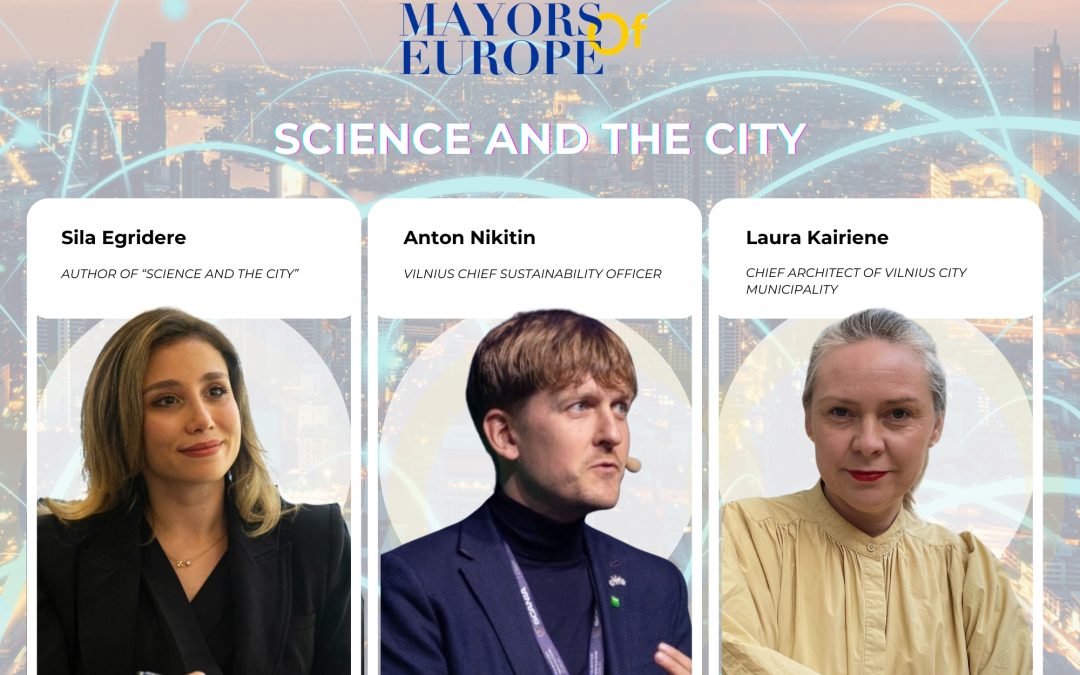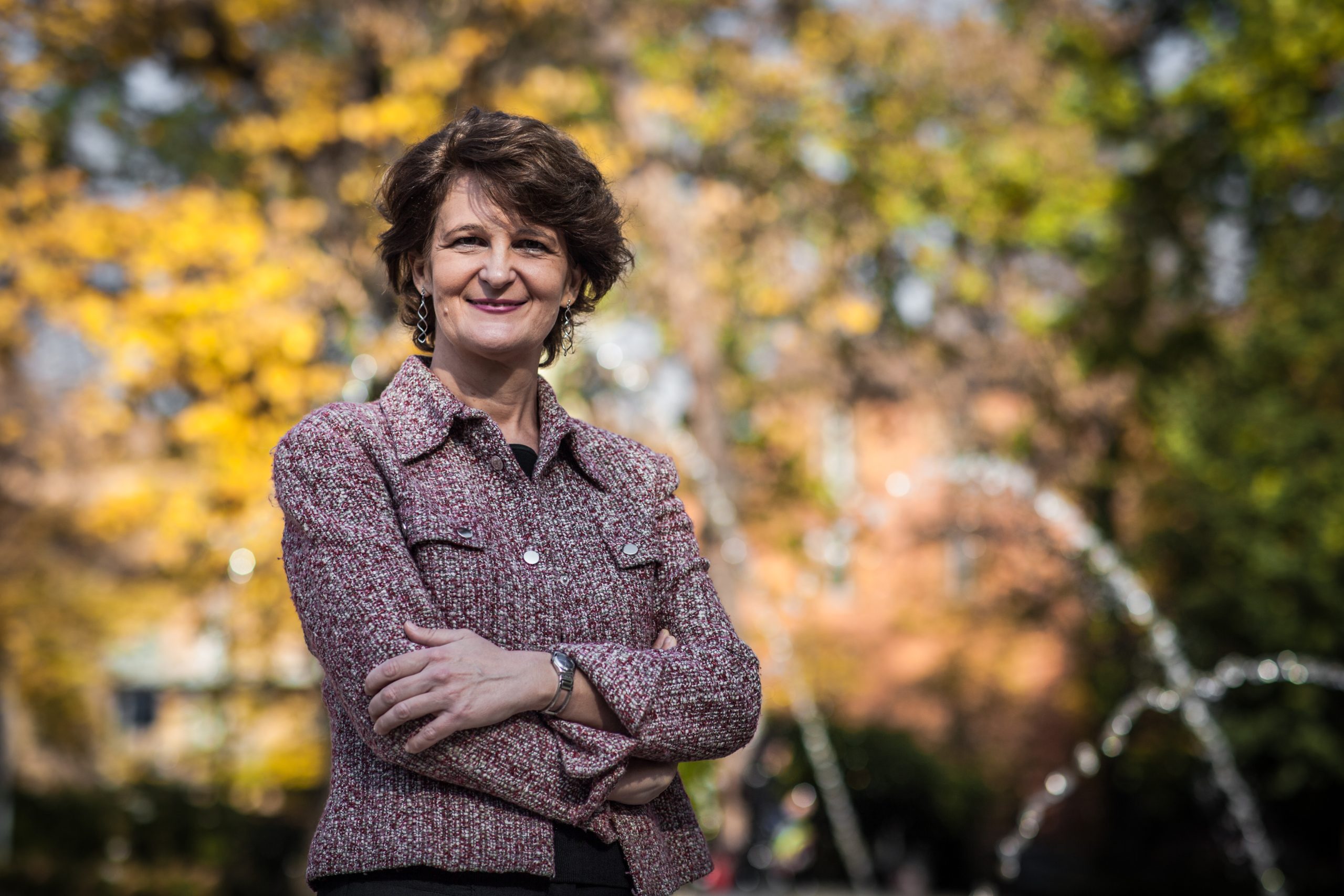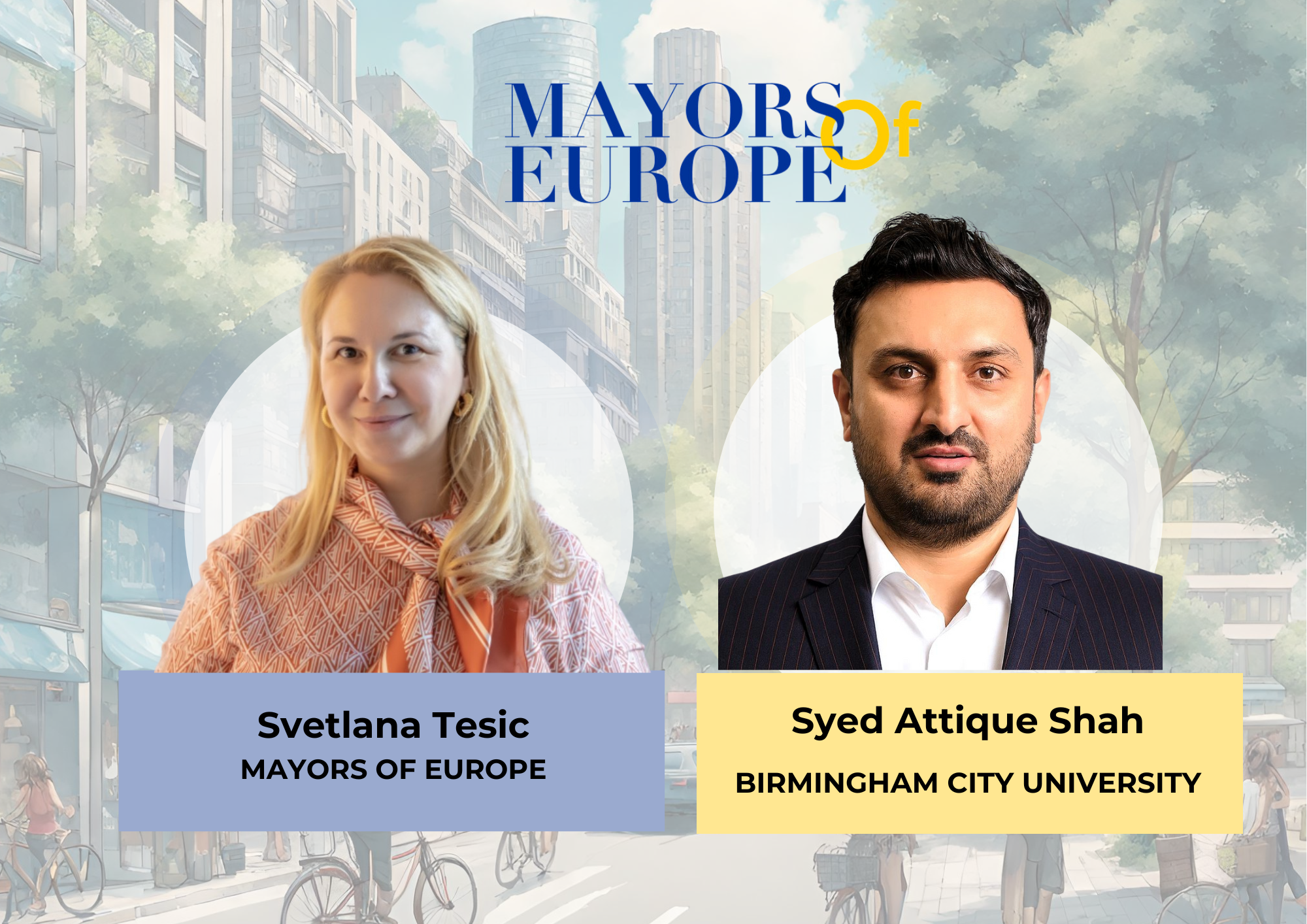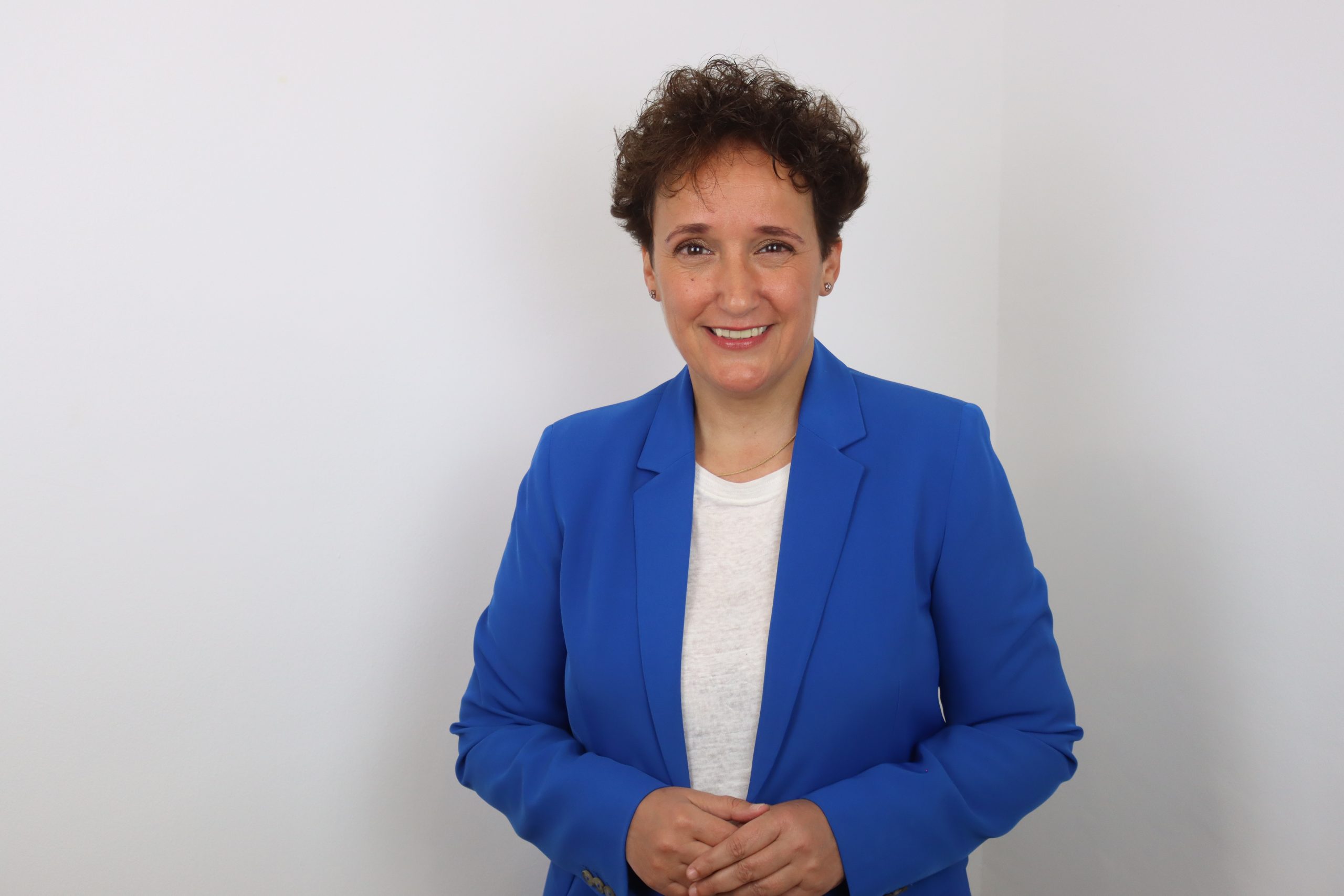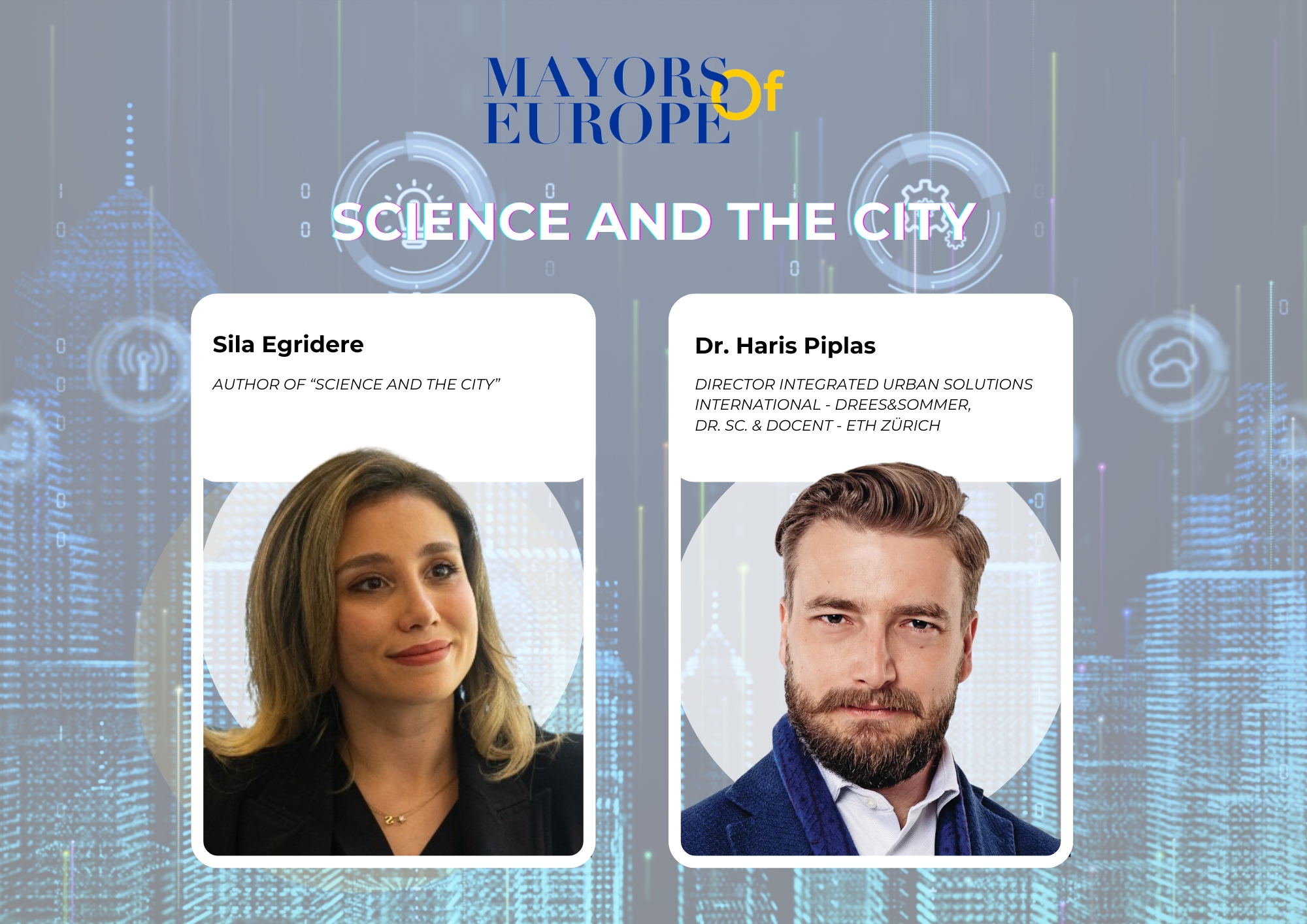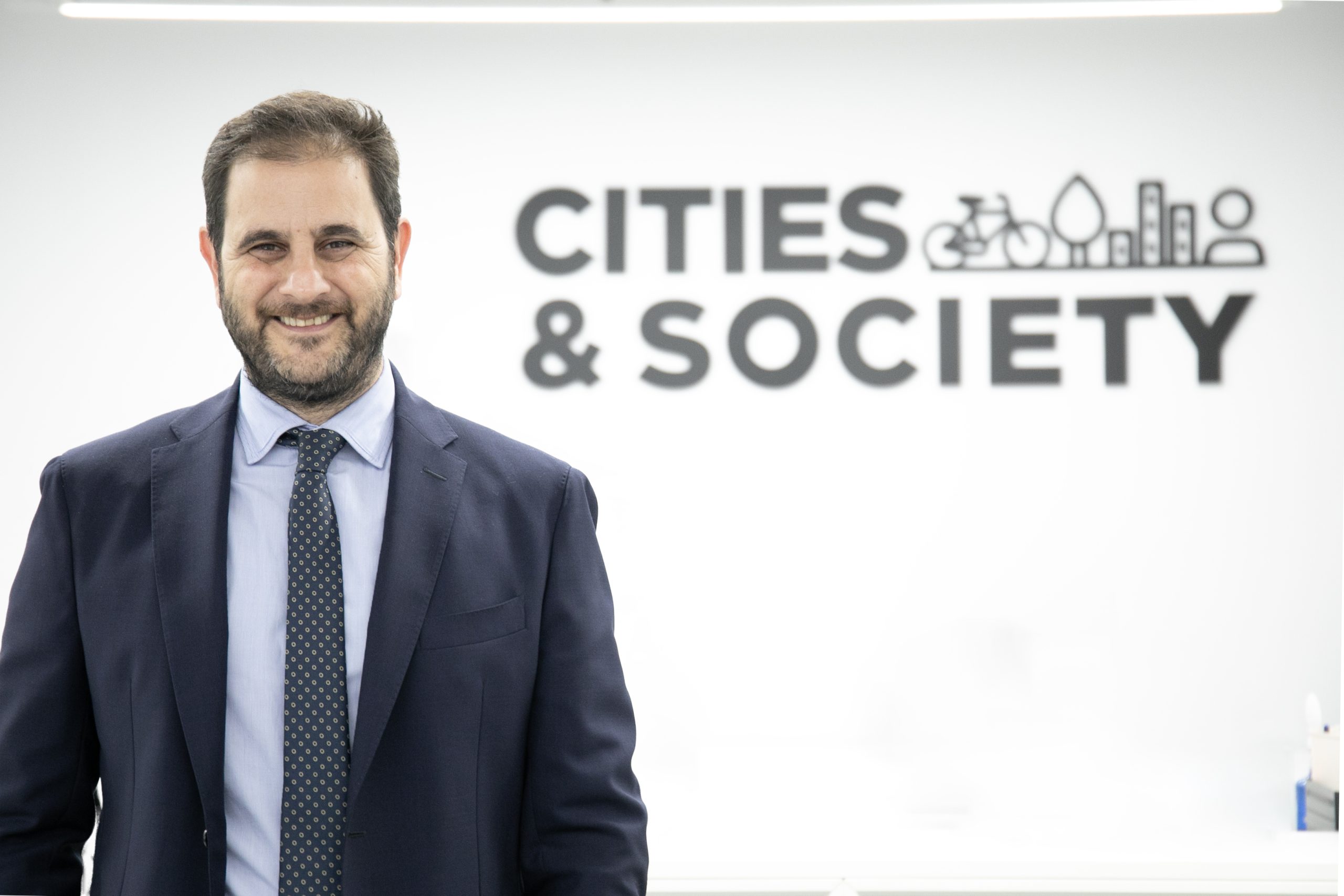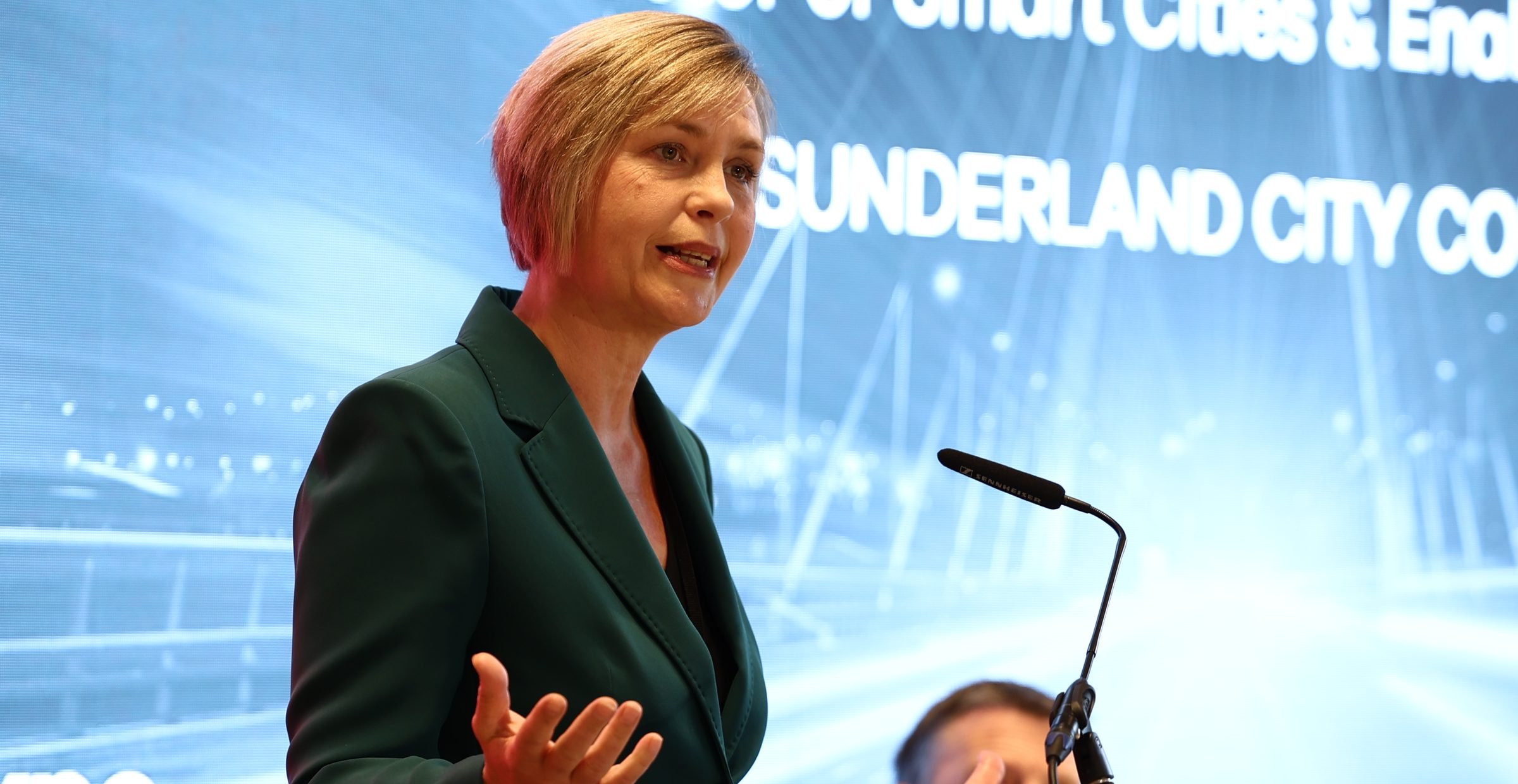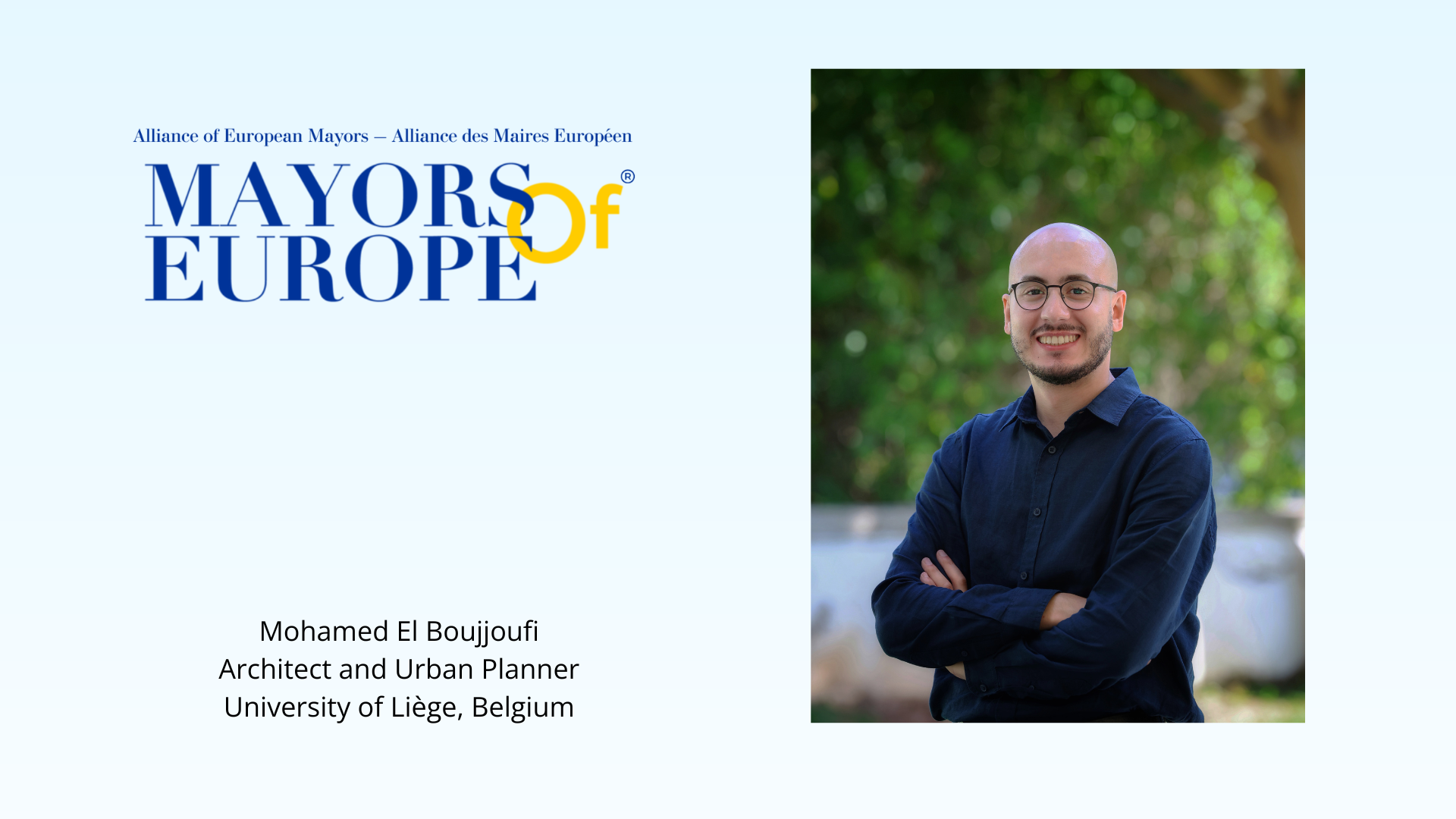From Index to Insights: Uncovering Vilnius’ Urban Transformation
by Sila Egridere, Architect and Smart City Expert
In our previous article, we explored the rising stars of Europe in the IMD Smart City Index 2025. But what lies beneath the numbers? What strategies, visions, and people are driving this momentum?
To find out, we’ve taken a closer look at one of the top climbers – Vilnius. More than just a name on a list, Vilnius is shaping the future of urban life through participatory governance, digital innovation, and bold sustainability goals.
To uncover the stories behind the city’s smart transformation, I spoke with two key figures behind the scenes: Laura Kairienė, Chief Architect of Vilnius, and Anton Nikitin, Chief Sustainability Officer. From citizen assemblies to digital twins, from post-Soviet renewal to poetic public spaces, their insights offer a powerful lens into how cities can become more human-centered, data-driven, and resilient.
Citizen Assemblies as a Tool for Urban Transformation
“The assembly’s focus — encouraging sustainable daily mobility choices — aligns closely with our ongoing work,” explained Laura Kairienė. The upcoming Citizens’ Assembly in 2025 marks a turning point for Vilnius. As a democratic innovation, it invites citizens to shape the future of their neighborhoods by contributing directly to mobility strategies.
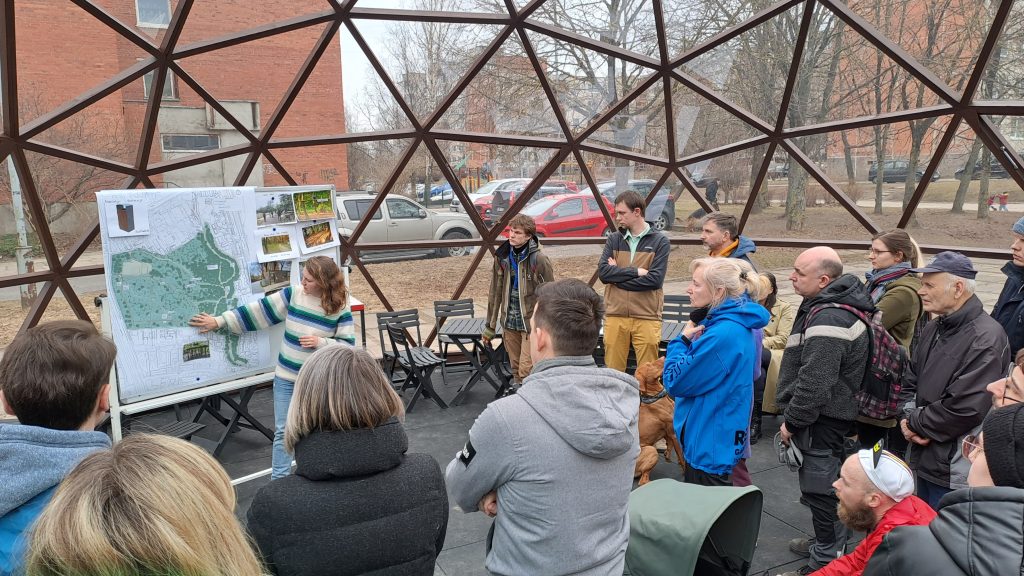
Images from various community engagement and participation events organized by the City of Vilnius. Source: City of Vilnius
The city will test citizen-generated ideas through pilot projects and tactical urbanism, real-life interventions developed with local communities. For Kairienė, the Assembly is also about restoring trust in city-making: “It’s a big step towards the trust that is so much needed.”
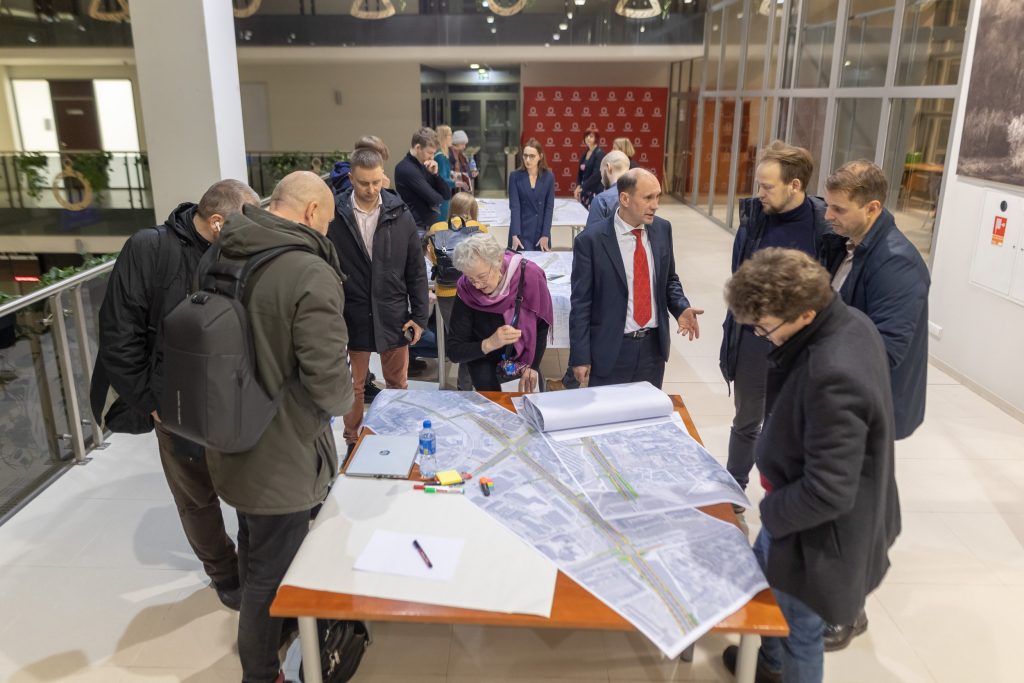
Images from various community engagement and participation events organized by the City of Vilnius. Source: City of Vilnius
Digital Twin Technology Is Rewriting the Urban Planning Playbook

Screenshot from 3D.vilnius.lt, the city’s digital twin platform, showing detailed 3D models of Vilnius’ urban fabric.
Vilnius is pioneering a new standard in urban planning by transforming its General Plan into a dynamic, digital ecosystem. The city’s platform, 3D.vilnius.lt , offers a living digital twin where planners and citizens alike can simulate, test, and visualize future scenarios.
“This is not just technology, it’s a new way of managing the city,” Kairienė emphasized. The digital twin consolidates data from infrastructure, green assets, mobility systems, and even grave locations, enabling more responsive, transparent governance. It also supports BIM methodology and makes visual data accessible to all stakeholders.
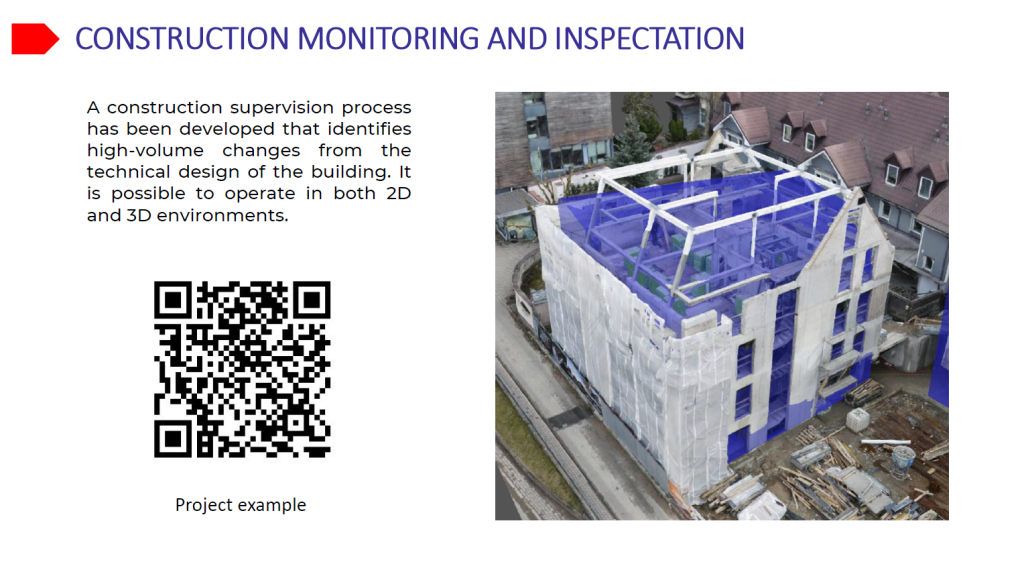
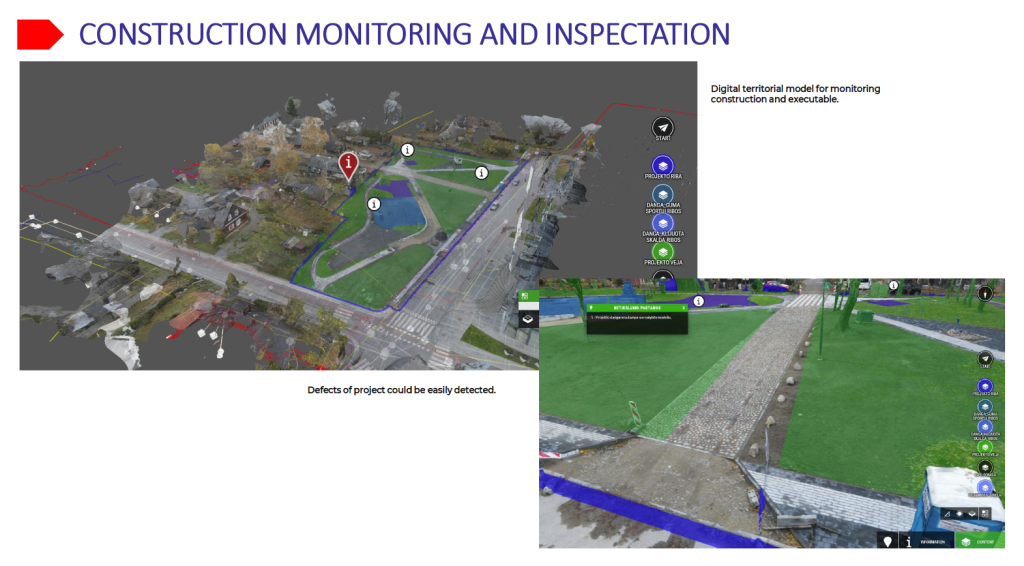
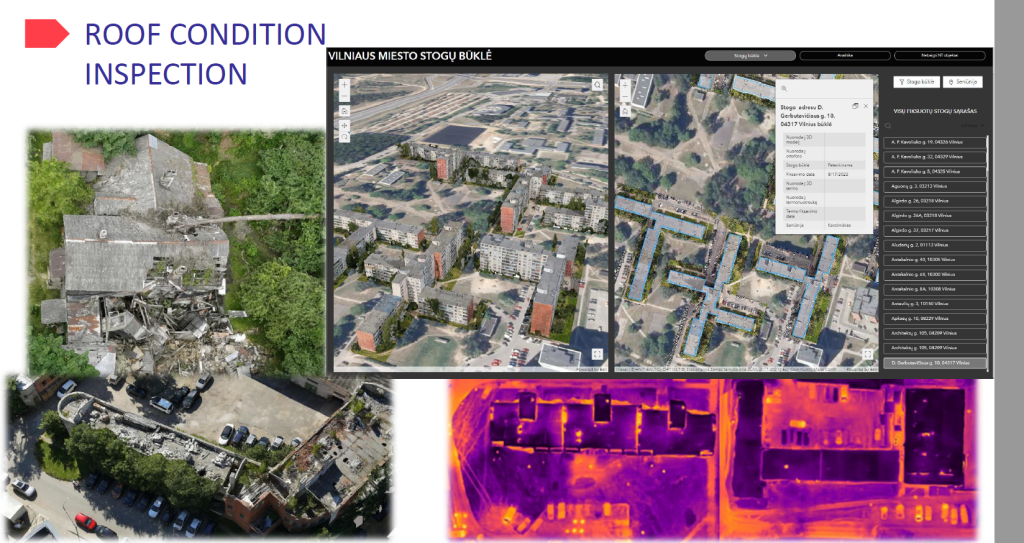
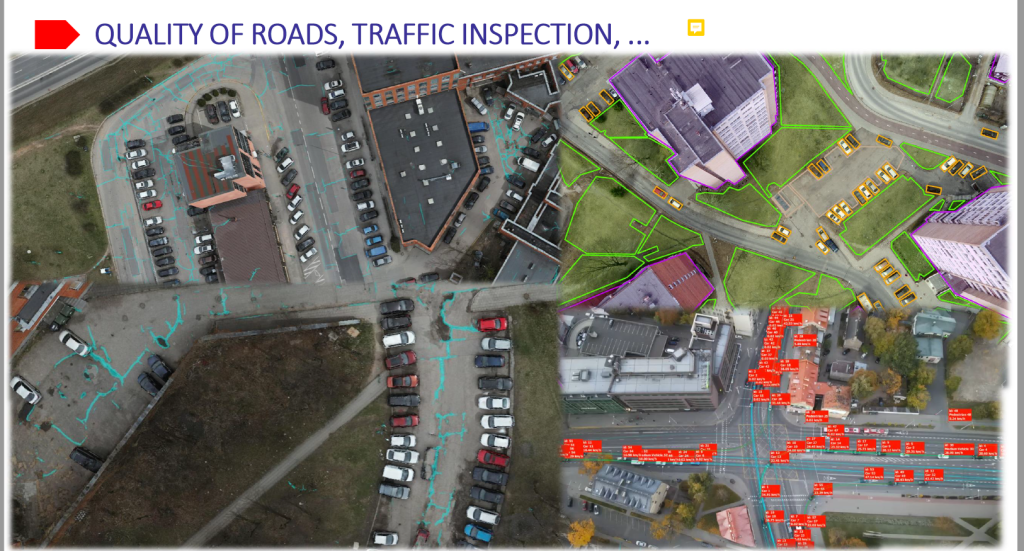
Screenshots from 3D.vilnius.lt showing the possibilities. Source: Vilnius Municipality
Vilnius’s digital twin platform, 3D.vilnius.lt, offers a multi-layered urban planning environment that includes high-resolution 3D city models (LoD2/LoD3), solar energy potential maps, heritage and cemetery records, infrastructure monitoring, and real-time mobility data. These layers enable advanced simulations, from shadow analysis to solar irradiation estimates and support participatory planning through accessible visualizations. The platform also integrates BIM data within a Common Data Environment (CDE), streamlining collaboration among planners, architects, and the public (ID Vilnius, 2024).
Renovating Soviet-Era Districts: From Efficiency to Identity
More than 60% of Vilnius’ population lives in Soviet-era housing, residential blocks originally designed for post-war efficiency, often at the cost of architectural quality, human-scale design, and community cohesion. These aging buildings, many of which are energy-inefficient and visually deteriorated, have long lacked the attention needed to enhance neighborhood identity. As Chief Architect Laura Kairienė explained, “We aim to preserve memory, not monotony.”
In response, the city has launched a new chapter in urban renewal through the introduction of comprehensive Renovation Guidelines. Rather than limiting improvements to thermal insulation or basic repairs, these guidelines advocate for a holistic transformation that blends functionality with aesthetics and cultural sensitivity. They provide clear strategies for façades, balconies, roofs, and public entrances, encouraging thoughtful design that strengthens the architectural identity of each district.
One of the flagship examples is Lazdynai, a Soviet-era district with protected heritage status. In Lazdynai, Vilnius employs a context-sensitive “update in place” strategy, preserving original urban layouts, restoring public artworks, and revitalizing public spaces, including courtyards and markets, while integrating modern elements such as accessibility features and climate-resilient landscaping. Public participation is also central, with residents invited to co-create solutions that balance preservation with livability. By reframing renovation as a cultural and spatial opportunity, not just a technical fix – Vilnius is redefining what it means to care for its urban past while building for the future.
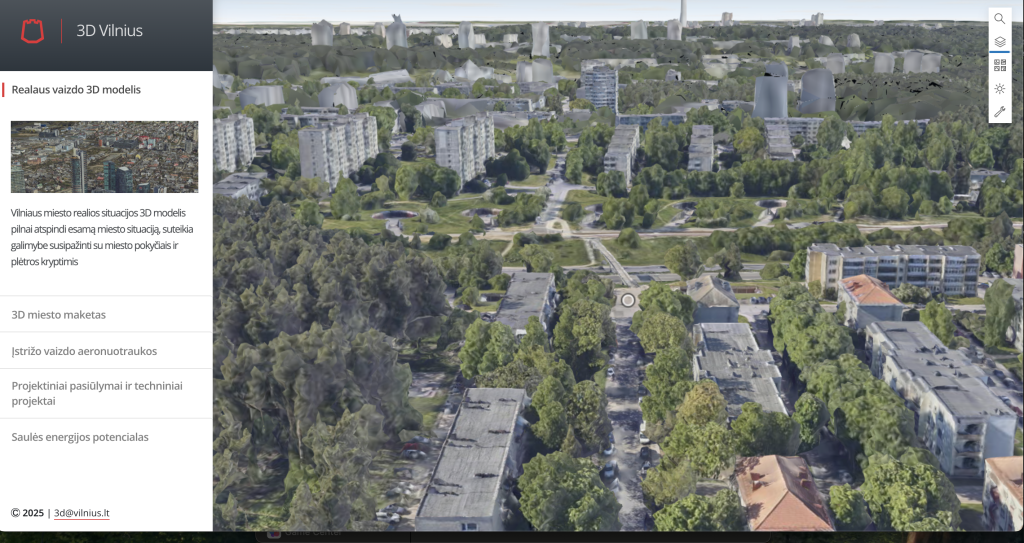
Screenshot from 3D.vilnius.lt, Aerial view of Lazdynai district in Vilnius as visualized on the city’s digital twin platform.
Participatory Design and Digital Engagement: A New Standard
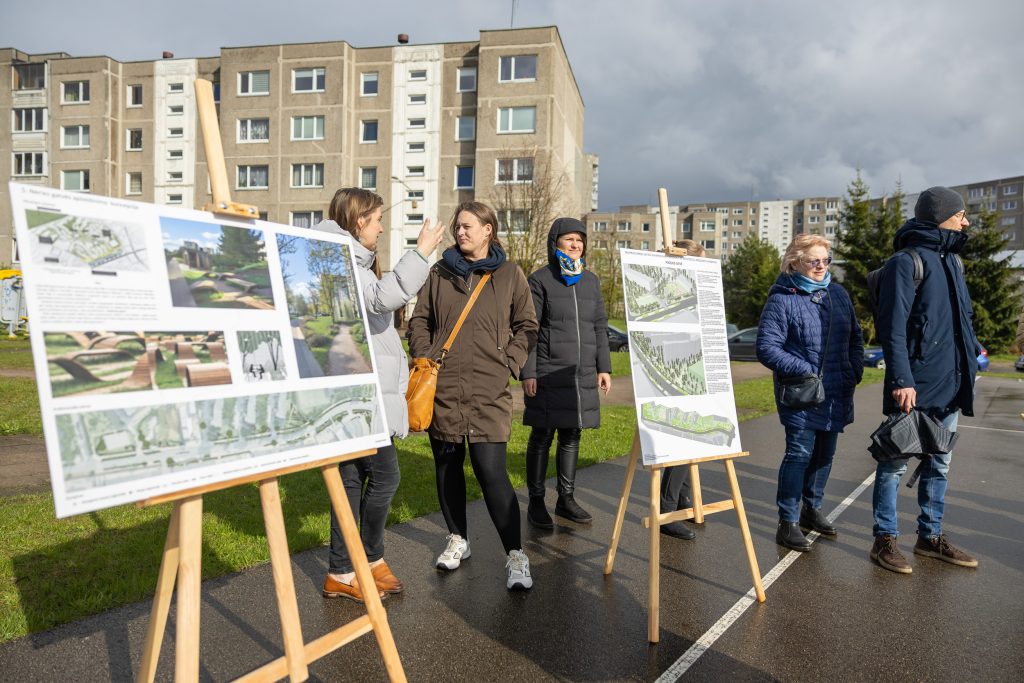
Images from various community engagement and participation events organized by the City of Vilnius. Source: City of Vilnius
“Engagement begins at the zero stage,” said Kairienė, highlighting Vilnius’s participatory planning model. Residents are involved from the start, through physical workshops and the digital platform pasitarkime.vilnius.lt, where they can suggest improvements and comment on interactive maps. This hybrid approach ensures inclusivity and fosters a deeper sense of civic ownership and trust.
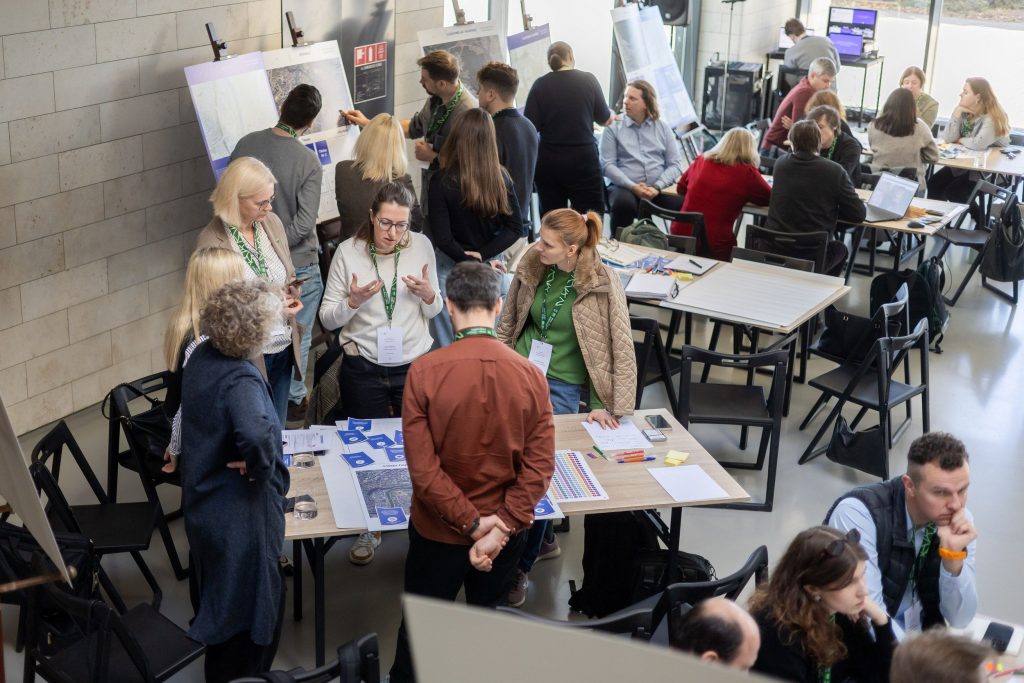
Images from various community engagement and participation events organized by the City of Vilnius. Source: City of Vilnius
A Green City in the Making: Vilnius as European Green Capital 2025
Vilnius’s recognition as the European Green Capital for 2025 is the result of a long-term, citywide commitment to what Anton Nikitin calls a “full-spectrum green transition.” Rather than focusing on isolated efforts, the city has invested across multiple dimensions of sustainability, from expanding biodiversity and improving water quality to decarbonizing energy systems and redesigning mobility infrastructure. Over the past eight years, Vilnius has grown its cycling network from just 30 kilometers in 2017 to over 170 kilometers in 2025, while also tripling the number of cycling trips made by residents.
More than 80% of Vilnius’s district heating now comes from renewable sources, with the goal of reaching 100% in the near future. Smart lighting systems, EV charging stations, and synchronized traffic lights have been introduced to reduce emissions and improve pedestrian safety.
Investments in tree planting and urban greenery are complemented by active protection of existing natural assets, reinforcing the city’s environmental resilience.
The campaign slogan “Not the greenest city. Yet.” captures both humility and ambition. As Nikitin puts it, sustainability is not a checkbox, but a journey, one that the city walks together with its residents. Citizen involvement is central to this transformation: residents are invited to take part in community-led greening initiatives, co-design urban projects, and shape environmental policy through digital tools. This integrated, participatory model ensures that Vilnius’s green future is not only ecological but deeply democratic and inclusive.
A Glimpse into 2030: A Human-Centered Future for Vilnius
For Anton Nikitin, envisioning Vilnius in 2030 means imagining a city where streets no longer belong to cars, but to people. “I imagine hearing more birdsongs and bicycle bells, seeing children playing where cars used to park, and public spaces filled with life,” he reflected. This future is not distant science fiction, it is a tangible goal built on the foundations the city is laying today.
In his vision, cleaner air and quieter streets go hand in hand with tree-lined avenues, urban meadows, and shaded courtyards where neighbors can connect. Smart, energy-efficient lighting makes the city feel safe and welcoming at any hour, while reliable, electric public transport ensures mobility without environmental cost.
Yet, beyond infrastructure, Nikitin emphasized a deeper transformation, one of mindset and emotion. The true measure of success, he noted, is not just in statistics or carbon metrics, but in how the city makes its people feel. If, by 2030, Vilnius evokes pride, joy, and a sense of belonging in its residents, if the city feels alive and human-scaled, then, in his words, “yes, we got it right.”
When Public Space Becomes Poetry
What if public space could do more than function, what if it could feel? For Laura Kairienė, the answer lies in a poetic vision: a sanctuary of swings nestled within the natural landscape, open to all ages and designed not only for play, but for emotional resonance. This imagined space would offer a quiet freedom, a place where the simple act of swinging becomes a gesture of joy, nostalgia, and connection.
But the concept extends beyond movement. Kairienė envisions a multisensory experience shaped by the collective memory of Vilnius’s residents. A “City Jukebox,” co-created with citizens, would play an evolving archive of urban soundscapes: the rustle of trees in Vingio Parkas, the buzz of Halės market, the distant toll of church bells, and the soft rhythm of footsteps in cobbled courtyards. Artistic lighting would shift subtly with time and weather, making the space feel alive, ever-changing, and attuned to its surroundings.
This idea redefines public space not as static infrastructure but as a shared emotional landscape, one that honors the intangible spirit of a city. In Kairienė’s words, it is a place where “the spirit of the city is felt not only in form, but in sound, light, and movement.” It’s an invitation to imagine public space as deeply personal, deeply public, and fundamentally poetic.
From participatory assemblies to digital twins, Vilnius is writing a new chapter in European urbanism, one that centers not only on smart infrastructure but on trust, memory, and human emotion.
As Kairienė and Nikitin demonstrate, the smartest cities are those that listen deeply, plan boldly, and dream collectively.
References:
ID Vilnius 3D city model of Vilnius: a living digital twin for urban planning. Available at: https://3d.vilnius.lt (Accessed: 13 June 2025).
ID Vilnius A new layer on the interactive map of Vilnius: a focus on solar energy. Available at: https://idvilnius.lt/en/a-new-layer-on-the-interactive-map-of-vilnius-a-focus-on-solar-energy (Accessed: 18 June 2025).
Vilnius City Municipality Participatory platform pasitarkime.vilnius.lt. Available at: https://pasitarkime.vilnius.lt (Accessed: 20 June 2025).

